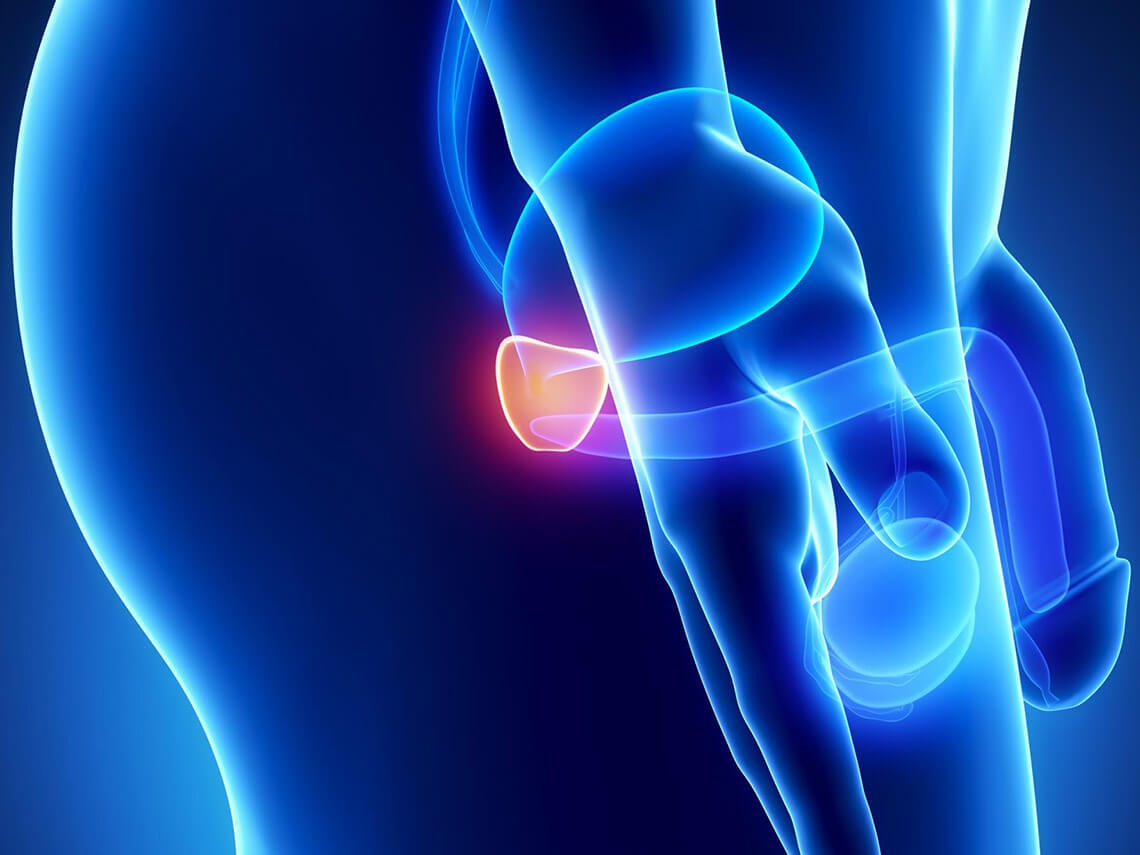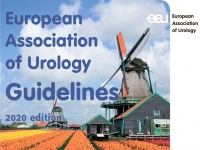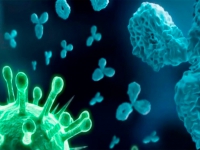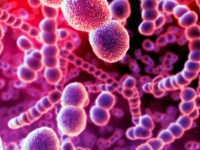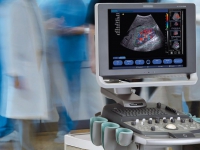This condition has been known since 1850. Chronic prostatitis (CP) is considered as one of the most common infectious inflammatory processes of the genitourinary organs, with a prevalence of up to 58% (according to pathohistological conclusions up to 73%). %). CP in 40-50% of cases is the cause of infertility.
Classifications of Prostatitis
National Institute of Health, USA, 1995
- Acute bacterial prostatitis (category I ) - 1-6%.
- 2. Chronic bacterial prostatitis (category II) - 5-10%.
- 3. Chronic abacterial prostatitis, (category III), or SCPP - 80-90%:
A - inflammatory SCPP - 50-60% (increased number of leukocytes in 3 servings of urine, prostate secretion, or sperm), (category IIIa).
B - non-inflammatory SCPP (prostatodynia) - 20-30%. (absence of an increased number of leukocytes in 3 servings of urine, prostate secretion or sperm), (category IIIb). - 4. Asymptomatic inflammatory (histological) prostatitis (category IV).
In the depth of defect: (catarrhal, follicular, parenchymatous).
By the severity of the inflammatory process: (acute (diffuse, abscessing), primary-chronic, subacute, latent).
By the nature of comorbidities: (vesiculitis, couperitis, colliculitis, urethritis, differentititis, epididimoorchytis, sclerosis, concrement, and cysts of the prostate, BPH and prostate cancer, infertility, sexual disorders).
By uniformity of prostate lesions: (focal, diffuse, infiltration, calculus, diverticular).
On the pathways of infection in the prostate:
- Urethrogen (channel): (trichomonas, gonorrhea, ureamicoplasmium, bacterial, mycotic, viral, spirochetes, amoebic) - 95%.
- Lymphogenic: (as a complication of proctitis, transintestinal fistulas, festering hemorrhoidal nodes) - pathogens: staphylococcus, streptococcus, E. coli, enterococci, anaerobic.
- Hematogenic: (with focal infections and infestations: furunculosis, sinusitis) - staphylococcus, streptococcus, E. coli, echinococcus.
- As a result of a downward urogenital infection : (bacterial (tbs, E.coli, Staphyl), mycotic.
- As a consequence of infection with a contaminated tool or permanent urethral catheter.
- As a result of the introduction through the intact urethra (helminths, insect larvae).
- In common infections and infestations (bacterial (tbs, leprosy, syphilis, typhoid fever, paratyphoid, septicemia, brucellosis, listeriosis, leptospirosis), protozoal (malaria), mycotic (blastomycosis), helminthiasis (shistosomatosis).
- Noncommunicable prostatitis:
- allergic
- congestive
- traumatic.
ETIOLOGY OF CHRONIC PROSTATITIS:
- Repeated urethritis (infectious factor) - unprotected sex.
- Repeated hypothermia, overheating, or insolation.
- Repeated violations of the diet (acute, salty, peppered, preservatives, occasionally - soft drinks such as kvass or non-alcoholic beer)
- Dezrhythmia of sexual shipments (rare (rarely 3 times a week) or frequent sexual excesses).
- Unprotected anorectal intercourse.
PATHOGENESIS OF CHRONIC PROSTATITIS:
- Infections (both STIs and conventionally pathogenic and saprophytic flora, detected in bacterial culture, and supporting the inflammatory process) and their duration.
- Blood stagnation in the veins of the pelvic, vein, and lymphostasis.
This is facilitated by:- congenital anatomical features of the development of veins, anastomosis between the veins of the pelvic and prostate.
- insufficiency of valves and weakness of venous walls.
- sedentary lifestyle.
- the difficulty the outflow of the secret from the prostate gland, which leads to delay and stagnation, which is a condition of the occurrence and maintenance of the inflammatory process, when mucus, bacteria, white blood cells, fibrin, and necrotic masses in conditions of difficult outflow, swelling and inflammation further strengthen and over time contribute to the formation of sclerosis and fibrosis of prostate tissue.
- the formation of calcinates and concrements in the prostate (13.7%), caused by reflux of urine from the urethra (urethrovenous, urethroprostatic and urethrovesiceseminal), and, which themselves can be a source of pathogenic macroorganisms leading to recurrence of infection and inflammation, bacterial biofilms), where most microbial cells are in a state of low activity and, importantly, with low sensitivity to the effects of antibacterial agents and are therefore resistant to antimicrobial therapy. Also, glycocalyx bacteria may not be detected in the microbiological examination of the secret of the prostate or ejaculate. Also, glycocalyx has properties: (antifagotitarian, anti-chemotaxis (neutralizing neutrophils) antiprolifetic (damaging lymphocytes), cytoprotective (protects bacteria from bacterial concentrations of antibiotics).
- reduction of T-cell and B-humoral immunity and development of autoimmune processes.
- genetically conditioned estrogenization and hypoandrogenia.
- in CP, the prostate gland loses its protective function and becomes a long-acting shelter of infection, a refuge for bacteria not defined by conventional methods of microbiological diagnosis and where antibiotics and antiprotozoal drugs penetrate limited.
STAGE OF CHRONIC PROSTATITIS:
- Stage - alterative changes (exudation, hyperemia, swelling, damage to interstitial and parenchymatous tissue -1-3 years).
- Stage - proliferative changes (reducing inflammation activity and predominance of connective tissue proliferation processes).
- Sclerosis is like the outcome of chronic prostatitis.
CLINICO - ANATOMICAL CLASSIFICATION:
- acute prostatitis (catarrhal, follicular, parenchymal)
- prostate abscess
- acute prostate hyperemia
- chronic prostatitis
- granulomatous prostatitis
- stagnant prostatitis
- prostate atony (neurosis, prostatorrhoea).
- an atypical form of chronic prostatitis.
- prostate sclerosis.
CLINICAL MANIFESTATIONS OF CHRONIC PROSTATITIS:
- Pain syndrome (up to 85%)
- genital pain syndrome: blunt pain over the pubis, in the crotch, testicles, urethra associated with urination.
- extragenital pain syndrome: abdominal pain, rectum, back passage, lower back, sacral.
- pelvic sympathalgia: searing pain without sharp boundaries, persistent itching of the anus, increased sweating, paresthesia in the perineum, general neuroticization.
- Sexual disorders (up to 48%): the causes of potency disorders in PATIENTS of CP is a psychopathological burden (78%), premature ejaculation (12%), androgenic saturation decrease (55.4%).
- Urination disorder (38-82%). Volume-time urination rates are slightly reduced, there are signs of hyperflexion of the detrusor, which is manifested by a decrease in the maximum volume of daily urination and an increase in its frequency at a more pronounced brightness of the urge, thinning and sluggishness of the urine jet, difficulty urinating.
- Fertility disorder (21%).
- Hemospermia (15%), the release of mucus from the urethra.
- Oppression of local and general immunity - develops secondary acquired immunodeficiency.
- Psycho-emotional disorders (70%).
They are manifested by expressed personality psychotization, neurotic syndromes of organic and somatic genesis, sometimes apathy, and yearly depression.
The system of the total evaluation of symptoms in chronic prostatitis is used -I-PSS, NIH-CPSI.
DIAGNOSIS OF CHRONIC PROSTATITIS
- Anamnesis:
- duration of the disease
- circumstances and sequence of symptoms, probable causes (according to the patient) that led to the development of the disease.
- the course of the disease (frequency of exacerbations, seasonality) and the factors that provoke it.
- the presence in the history of the patient and all his sexual partners with unprotected sex sexually transmitted diseases and STIs, infertility, miscarriage in the period up to 12 weeks (miscarriages, frozen pregnancy), Pelvis Inflammation Disease, features of their examination and effectiveness of treatment, duration of remission.
Previous examination and treatment, its effectiveness, and duration of remission. - the presence of occupational and domestic harmfulness (hypodynamia, hypothermia, overheating and insolation, stress, diet disorders (acute, salty, canned, spicy food), habitual intoxications with alcohol, nicotine, drugs.
- information about the nature of sexual life - regularity of sexual life, number of partners, the fullness of sexual acts, method of contraception
- the presence of systemic diseases (diabetes) and previous operations on the pelvic organs and external genitalia.
- PHYSICAL SURVEY - aims to detect various diseases similar to clinical symptoms with chronic prostatitis: (cancer in situ, and other tumors of the bladder and rectum, chronic inflammatory diseases of the urinary system (cystitis, pyelonephritis), BPH and prostate cancer, neurogenic dysfunction of the bladder, interstitial cystitis, groin hernia, lumbosacral osteochondrosis.
Finger rectal examination - a mandatory element in the examination of a patient with suspected chronic prostatitis (with confidence up to 67%) - perform in various positions (in the knee-elbow position, standing with the torso tilted forward or on the side with the knees brought to the abdomen) - Smear from the urethra without or (with indications after provocation) with the determination of the number of white blood cells (normally up to 4-5 in p/vision), the presence of trichomonads or diplococci, mucus, Candida albicans, Gardnerella vaginalis.
- The secret of the prostate gland with the determination of the number of white blood cells (normally up to 10 p/vision), red blood cells (normally not detected), the presence of trichomonads or diplococci, mucus (normally absent), as an indirect sign of the presence of trichomonad infection), lecithin grains (normally abundant amounts), amyloid bodies.
Due to the occlusion of the ducts of the prostate lobes inflammatory smear-like secret containing bacteria, white blood cells, macrophages fragments, and the epithelium, the data of the study of the secret of the prostate, obtained during the 1st massage, do not reflect the true state of the inflammatory process. Restored outflow from the prostate to the 4th procedure is a more objective criterion of inflammation in the prostate, because, the increase in the number of white blood cells is consistent with the restoration of outflow from infected prostate ducts. It should also be taken into account the increased number of white blood cells in smears, the secretion of the prostate gland, seminogram, as a frequent indirect sign of the presence of STIs (trichomoniasis and/or gonorrhea). - Also conduct the take of the material on PCR or RIF at Ch. trachomatis, Tr. vaginalis, N. gonorrhea, Mycoplasma genitalium, Ureaplasma urealiticum, Mycoplasma hominis, Gardnerella vaginalis, pot sowing on conditional pathogenic and saprophyte flora with a sensitivity of them to antibiotics. In most patients with bacterial urethroprostatitis, seedings do not allow to determine the true cause of the disease, because in crops separated from the urethra or prostate the fastest and abundant growth gives saprophytes and commensals, and pathogenic bacteria often grow poorly on conventional nutrient environments. Therefore, the detection of saprophytic aerobic bacteria and pathogenic anaerobic in the sowings of the urethra or prostate is not usually a testament to their etiological role and the basis for the diagnosis of "bacterial urethritis" (quote V. A. Molochkov 2004).)
- Seminoprom with sperm sowing on Tr. vaginalis on nutrient medium in.Pouch TV, and N. gonorrhea on nutrient medium In Tray GC. Ejaculate contains the secret of seminal bubbles (50-65%), the secret of the prostate gland (30-40%), the secret of the testicles, and their appendages (3-5%). As a rule, CP, is characteristic of increasing sperm viscosity due to increased amounts of mucus, decrease in fructose levels (up to 60-70%), citric acid and acidic phosphates, decrease in sperm count (in 60%), decrease in the number of mobile and increase in the number of small- and immobile sperm, duration and speed of sperm movement, increase in the number of abnormal with defects in the tail, head or neck, agglutination( +,++,+++,++++). Often, the exacerbation of chronic prostatitis, vesiculoprostatitis, or orchoepididymitis increases the number of white blood cells in sperm.
In an STI examination, the negative result of any study does not preclude the presence of trichomonad or gonorrhea; all kinds of research must be performed repeatedly, using different kinds of provocations at the same time by all available methods, exploring all kinds of secretions (urine, scrapes from the urethra, the secret of the prostate and sperm). - MAR- test -is a test for concomitant infertility (or the presence of agglutination of +++ or ++++).
- General urine test and 2- and 4-glass sample. Urofloumtria as a screening method and cytological urine examination. Pay attention to the increase in the number of white blood cells, red blood cells, the presence of mucus and bacteria in the urine, atypical cells during a cytological examination of urine.
- Ultrasonic examination (transabdominal and/or transrectal (more objective)) pelvic organs (urinary bladder and prostate) with the determination of the volume of the prostate, the presence of calcinates and stones, fibrosis, cysts in the prostate, the condition of the bladder wall, the presence or absence of tumors in it, the volume of residual urine, the symmetry of urine emissions from the urinary tract. In the case of the scrotum, the organ is important is the absence of tumors, twisting of the testicle, hydrocele, varicocele, cysts in the heads of appendages of the testicles, as an indirect sign of the possible presence of STIs, symmetry of the volume of the testicles.
- General blood test, biochemical blood test, a blood test for Ig A, M, G Ch. trachomatis, hepatitis B, C, HIV (if there are indications)
- PSA is general and free, the ratio of free and general PSA in men over 50 years of age or suspected prostate cancer in PRI, (in the presence of cancer family history, the presence of HIV - after 40 years).
TREATMENT OF CHRONIC PROSTATITIS:
The principles of treatment of chronic prostatitis are a comprehensive effect on all links of etiology and CP pathogenesis with a strictly individual approach.
Directions of therapeutic effects:
Antibacterial therapy - depending on the detected uropathogens during the examination of the secret prostate, sperm, scrapes from the urethra or urine, as well as the trope of drugs to the prostate gland, and based on the following principles:
- Choosing the most active and least toxic drug
- Consider previous antibacterial therapy
- Determining the best doses and methods of administration
- Determining the necessary duration of treatment before the persistent therapeutic effect (remission) is fixed.
- Knowledge of the features and frequency of side effects.
- a combination of antibacterial drugs between each other and with other drugs and treatments to enhance the effect and reduce the frequency of side effects. - Mandatory examination and treatment of a sexual partner.
Methods of the introduction of antibacterial drugs in the treatment of chronic prostatitis:
- Inside
- intramuscular
- intravenously
- in candles or enema
- endolymphatic (straight and indirect)
- endourethral (instillation and instillation massage of the prostate)
- with the help of physiotherapy effects (electrophoresis, phonophoresis, diadinamoforesis, inductoelectrophoesis, magnetophoresis)
Duration of antibacterial therapy of chronic prostatitis:
- antibacterial therapy should be carried out for a long time: 2-4 weeks (3 - 4 seven- to ten-day courses with 7-10 day breaks). With positive dynamics, the therapy should continue for another 2 to 4 weeks to achieve clinical improvement and achieve clinical remission with the normalization of the indicators of general urine analysis in 3 samples, smears from the urethra, the secretion of the prostate and seminogram, the size of the prostate according to ultrasound.
Causes of difficulties of antibacterial therapy in chronic prostatitis:
- prostate epithelium (lipid membranes of epithelial cells) is a barrier to diffusion of drugs from the blood to the focus of inflammation
- violation of microcirculation in the prostate due to inflammatory infiltrations, scar-sclerotic changes, blood clots in the venous system.
- the alkaline reaction of prostate tissue in active inflammation
- non-limited microabscesses
- The resistance of pathogenic flora strains and its mixed nature, when the virulence of each of the pathogens of chronic prostatitis increases dramatically, the adaptive capabilities of gonococcal strains are increased, and their sensitivity to antibacterial agents and phagocytosis is reduced. The inflammatory process is often supported by secondary infection (saprophytes and commensals), so antibacterial therapy leads only to temporary prophylactic sanitization, which is then re-invasive by the same bacteria.
Difficulties in accurately diagnosing the infectious factor - allergic and autoallergic processes
- the presence of calcinates and concremets in the prostate
- the presence of a poorly stretched dense prostate capsule
- complications of antibacterial therapy: (immune depression, the occurrence of dysbacteriosis, oto- and nephrotoxicity, depressing effect on spermatogenesis, the formation of L-forms of bacteria in irrational treatment).
- failures of antibacterial therapy depend on the insufficient duration of treatment, low concentration of drugs in the prostate and its secret, the formation in the lumen of the acinus, and ducts of microcolonies of bacteria covered with extra chilly polar polysaccharide shell (biofilm).
- Good penetration of antibacterial agents into a healthy prostate does not mean that sanitizing concentrations will be created in all foci and pockets of inflammation. Medications (antibiotics or anti protozoic drugs) fall into scar-modified, surrounded by an inflammatory barrier, often encapsulated glandular tissue at a lower concentration than serum. This concentration may not be sufficient to kill all the bacteria or protozoa available there, which in the stunning pockets are usually in the form of latent, dormant infection, i.e. in a state of relatively suspended anabiosis and therefore noticeably less sensitive to antibacterial drugs, many of which actively affect only intensively multiplying bacterial cells.
Therefore, modern therapy of chronic prostatitis, as a rule, can not be limited to ethiotropics and should be combined with pathogenetic treatment.
Patients should stick to:
- active motor mode, including exercise, including pelvic floor muscle contractions (physiotherapy for anus muscles and perineum) with bike failure
- Avoid hypothermia, overheating and insolation
- adjust the chair
- exclude spicy seasonings, smoked, salting, marinade, alcoholic and non-alcoholic carbonated drinks
- eliminate neuro-mental and physical overload
- compliance with the rules of sexual hygiene: (regular sex of protected sex, without abstinence more than 1 - 2 days or sexual excesses (repeated and prolonged sexual acts).
- correction of deviations of psychosomatic symptoms (psychotherapy, antidepressants, tranquilizers, etc.)
- treatment of the partner (according to the indications).
THE PATHOGENETIC THERAPY OF CHRONIC PROSTATITIS includes all methods and means that aim to eliminate factors that contribute to the preservation of the inflammatory process in the prostate or leading to the treatment of individual disorders caused by prostatitis. These include:
- Immunotherapy (immunostimulators, immunomodulators)
- Biogenic stimulants
- Interferon drugs
- Interferonogens, including specific immunotherapy (gonovaccine)
- Citomedin (candles with prostatilen, Zn and Vit E)
- Systemic or local enzyme therapy
- Spasmolytics, Cholinelitics
- Drugs to restore microcirculation in prostate tissue
- Vitamins
- Adaptogens and vitamins
- Hormonal drugs
- Non-steroidal anti-inflammatory drugs (NSAIDs)
- adrenoblockers
- Antihistamines
- Homeopathic drugs
- Phytotherapy
- Reflexology
- Girudotherapy
- Prostate massage.
The mechanism of therapeutic action of prostate massage:
- restores the passage of ducts, eliminates blockages of glandular passages, restores the drainage function of the end sections of the ducts of the prostate gland, increases the reduced ability of the ducts, contributing to the more vigorous removal of the stagnant secret and products of its decay, contributes to the decline of retentive changes
- increases the penetration of antibacterial agents into prostate tissue
- promotes the activation of microorganisms at rest, making them more sensitive to antibacterial therapy
- improves blood - and lymph circulation reduces venous stagnation in the gland, causes its hyperemia, which improves trophies and function
- increases the muscle tone of the prostate and seminal bubbles, which improves the potency and acuity of orgastic sensations.
Indications for prostate massage:
- diagnostic massage to get a secret
- chronic prostatitis without local and common symptoms of aggravation of the infectious process in the prostate
- prostate atony and seminal vesicles
- pain syndrome
- concomitant sexual dysfunction
- fertility disorders caused by chronic inflammation of the genitals.
- prostatovesiculites
- chronic pelvic pain syndrome
- asymptomatic prostatitis
Contraindications to prostate massage:
- acute and subacute prostatitis
- prostate abscess
- empyema seed bubble
- colliculitis
- the slightest signs of exacerbation of chronic prostatitis or the occurrence of its complications with the involvement of the bladder or scrotum organs
- exacerbation of common infections with increased body temperature, viral diseases of the body
- prostate and seminal vesicles
- the presence of stones in the prostate
- chronic prostatitis and prostate cancer
- chronic prostatitis and BPH
- acute delay in urination
- a crack of the anus
- aggravation of hemorrhoids
- thrombosis of hemorrhoidal nodes
- proctitis
- paraproctitis
Principles of prostate massage:
- massage should be soft, gentle, delicate, "gentle finger", atraumatic
- should not be rough and intense, as mechanical trauma can cause aggravation and spread of the inflammatory process
- the more pronounced changes in the prostate, the less active the massage should be
- should be dosed from light stroking to strong (but not deep) finger stroking
- must be combined with massage of seed bubbles
- must be combined with other treatments
- if there is no secret after the massage, it is not necessary to mine it at all costs
- massage is stopped if there is no improvement after it, there is an increase in local symptoms, increased body temperature, worsens the general condition
Prostate massage varieties:
- bimanual
- massage on a holey catheter
- massage on the boom
- Vibro massage
- instillation massage of the prostate (by E.K.Arnoldi), in combination with LOD- therapy (phalodecompration) and VMLT (Vibro-magnetic laser therapy).
Physical treatments for chronic prostatitis:
- electrophoresis (skin and rectal, urethral)
- diadynamic and sinusoidal modulate current (rectal, urethral or skin)
- ultrasound therapy (skin, rectal, transurethral)
- an ultra-high-frequency electromagnetic field (microwave therapy) (microwave therapy) - skin-to-skin or transrectal
- Ultra high frequency - therapy
- Inducotherapy
- a current of the supratonal frequency
- diathermia
- Darsonvalization
- local hyperthermia (transrectal, transurethral)
- direct electrical stimulation of the prostate (transrectal, endourethral)
- low-intensity laser radiation (LILR) (endourethral, transrectal)
- magnetotherapy (skin, transrectal)
- vacuum magnetotherapy
- electromagnetic radiation of extremely high frequency in the millimeter range
- interference currents
- sound stimulation
- shock-wave vibrate
- voluminous pneumonpressing
- hyperbaric oxygenation
- zone decompression, phalodecompression (LOD therapy)
- prostate pneumovibromassage
- Combined techniques:
- balneotherapy of chronic prostatitis (sulfur-hydrogen, sulfide, carbon dioxide, sodium chloride, a mineral from sources, coniferous salt, rap, iodobrome, geothermal, turpentine)
- mud treatment of chronic prostatitis (peat, sapropel, pine, freshwater clay iles)-rectal or crotch), in isolation or combination with other methods
- ozokerite
Contraindications to spa and mud treatment:
- malignant and benign tumors
- expressed cardiovascular, renal and liver failure
- mental illness
- acute and subacute non-specific diseases of the prostate and other genital glands and adjacent organs
- specific infectious prostatitis in the acute and subacute stage
- acute inflammatory processes of any localization
- proctitis, proctosigmoiditis
- cracks of the anus
- BPH
- rectum fistulas
- ulcerative colitis
- paraproctitis
- bowel polyps
- bleeding hemorrhoids
Only persistent combined ethiotropic and pathogenetic therapy allows us to get good results in the significant majority of patients with chronic prostatitis. At the same time, the longer the inflammatory process, the more significant the connective tissue changes, and the more sharply the violation of vascularization of the affected tissue, the more intensive the pathogenic therapy should be.
Timely detection and pathogenic therapy of chronic prostatitis are some of the ways to reduce the incidence of prostate adenoma (BPH), which significantly reduces the quality and life expectancy of elderly and old age.
Minimally invasive treatments:
- transurethral microwave thermotherapy (TUMT)
- transrectal hyperthermia
- transurethral balloon dilation
- transurethral needle ablation of the prostate (TUNA)
- prostate laser therapy
- invasive neuromodulation (InterStim)
Transurethral electroresection of the prostate gland (TUR). Testimony:
- infravesic obstruction that complicates the course of chronic prostatitis
- persistent dysuric and pain syndrome, which is not stopped by conservative methods
- presence of retention processes in the prostate
- the presence of complications of calculus or sclerotic nature
- persistent recurrence of infection
- ineffectiveness of conservative therapy.
The task of TUR is to restore the passage of the ducts of the prostate acinus to create an outflow of pus content.
Prevention of chronic prostatitis is the exclusion (or limitation) of provoking factors:
- alcohol abuse (70%)
- hypothermia, cold (25%)
- aggravation in the spring-autumn periods (38%)
- exception or restriction of spices, pickles, smoked meats, canned food.
- restricting or quitting smoking
- sexual hygiene, regular protected sex



